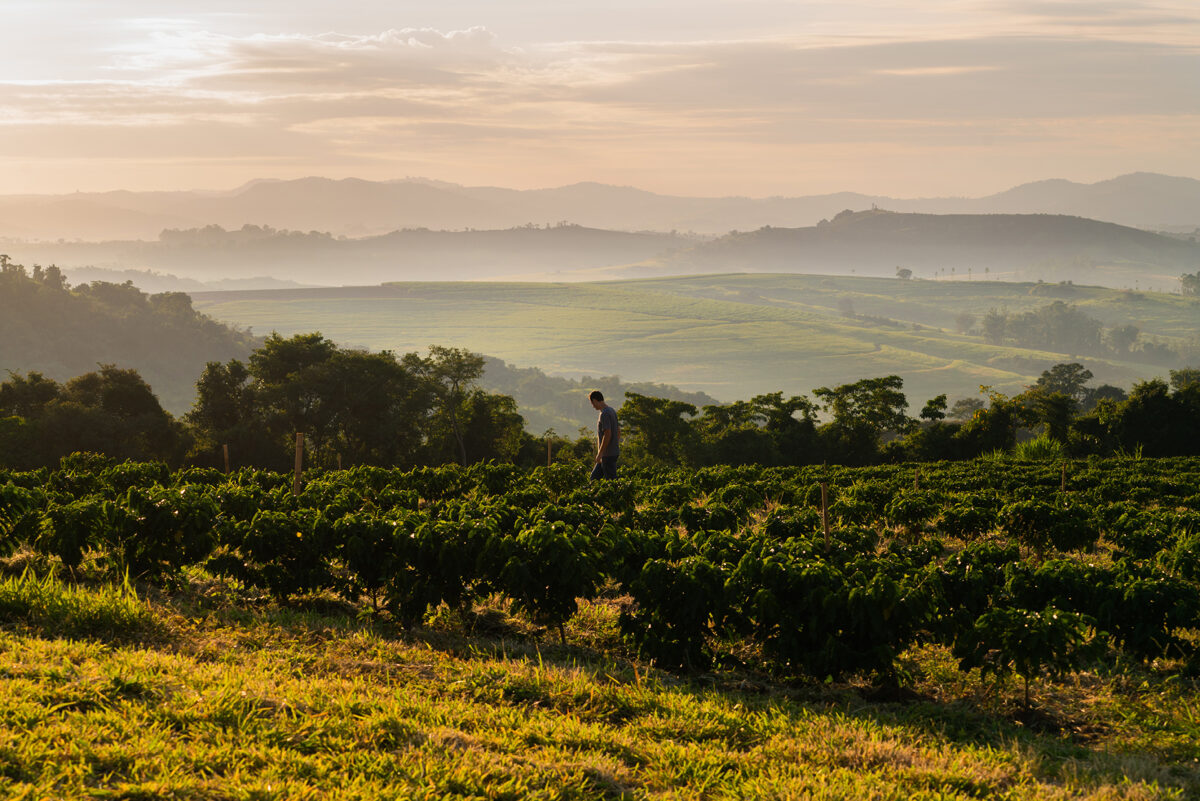In the 1980s, the Rodale Institute started using the term “regenerative organic” to describe a holistic approach to farming, going beyond sustainable. For some reason it hasn’t been used much until recently, when an influx of all sorts of products ranging from gin, clothes, cacao, and coffee have been adding “regenerative” to their labels. For some, it might be a bit confusing to name a product regenerative. What is being regenerated? Regenerative for whom?
In the case of coffee, a perennial crop that originated in forest gardens, the intensification of production in the last decades meant producers moving towards monoculture and thus resulting in soils gradually less abundant in living microorganisms and more prone to erosion. Many studies point out that by 2050 the area suitable for Arabica production is going to be significantly diminished due to increases in temperature and wetter wet seasons, and some producers are now starting to shift to climate-resilient practices so they can cope with climate change effects on coffee productivity. However, it is rather challenging to establish a set “regenerative farming” framework for producers across regions and what it entails. I asked some coffee farmers from Brazil who already farm sustainably and/or organic on their point of view on the subject.
According to Braulio Garcia and Iracema Bonomini, a couple running a syntropic farm in the Mantiqueira de Minas region, regenerative agriculture (RA) means to generate biodiversity. And that could mean different things if you are located in different regions. “The idea is that of an entire system benefitting from everything, and not an array of efforts just working towards a single crop.” Bonomini believes RA could be in the end more of a fantasy term up for the consumer’s interpretation, rather than something effective—unless it gets regulated. “We see multinationals announcing their pledge to buy coffee (and other products) sourced from RA. But what is their concept of RA? How can you measure something if there is no stated definition?”
The couple takes a holistic approach to the farm, not focusing on the coffee per se, but at the ecosystem they created. “I take care of the soil, I sow seeds with the intent to build more biodiversity, and then we get to measure this biodiversity: we see sloths, Pampas deers, maned wolves, all at our property, not to mention the quantity of birds and mushrooms. Our coffee is one of the outcomes, and within this context, our productivity is outstanding.” The couple makes an analogy of a seemingly highly productive coffee farm as a patient in an intensive care unit. “That patient is being maintained alive with all his metrics up to par, but at what cost to his overall health? If you produce 80 bags of coffee per hectare, what are your input costs? In how many years your topsoil will be depleted? Productivity, when isolated, is a meaningless term.”
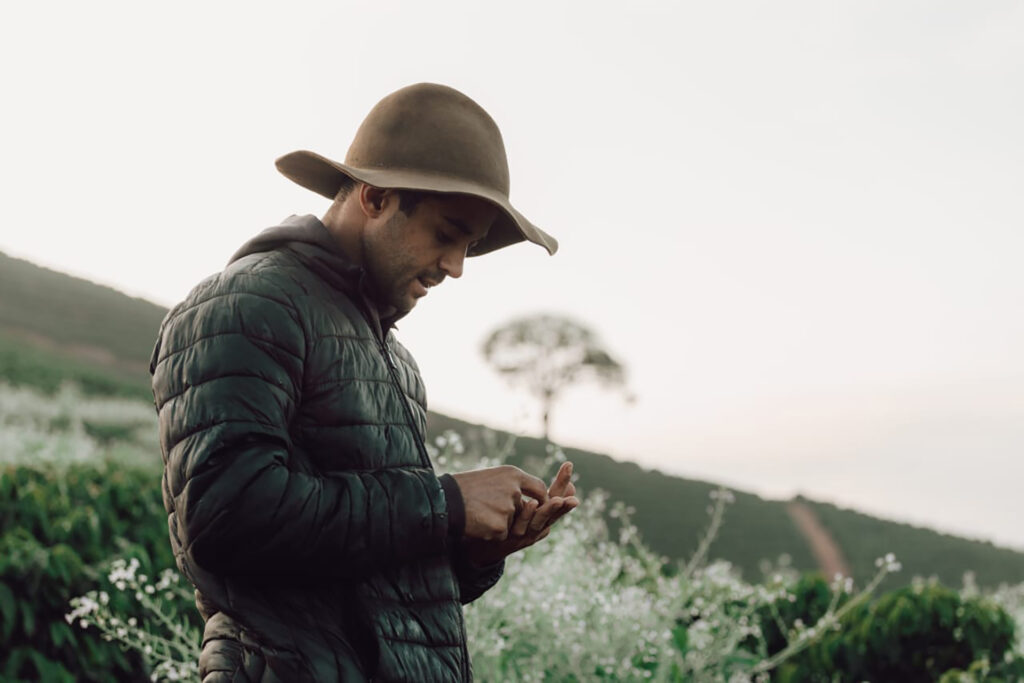
For Helisson Afonso, from Sítio Baixadão, to regenerate is to build within the farm’s system. He uses cover crops to improve organic matter and ultimately build an environment within the soil that is a source of nutrients for fungi, Trichoderma, Bacillus, and other microorganisms. In his understanding, what he has been doing for the last three years is building a resilient and healthy soil that is able to fight disease or pests by itself—but if needed, Afonso will use a mixture of biological and chemical (in low dosages) pesticides. “The chemical component must be compatible with the biological one, it is a whole new story. It’s nothing like the conventional way of doing things. But since I have started this transition, my crop hasn’t needed anything, thank God.”
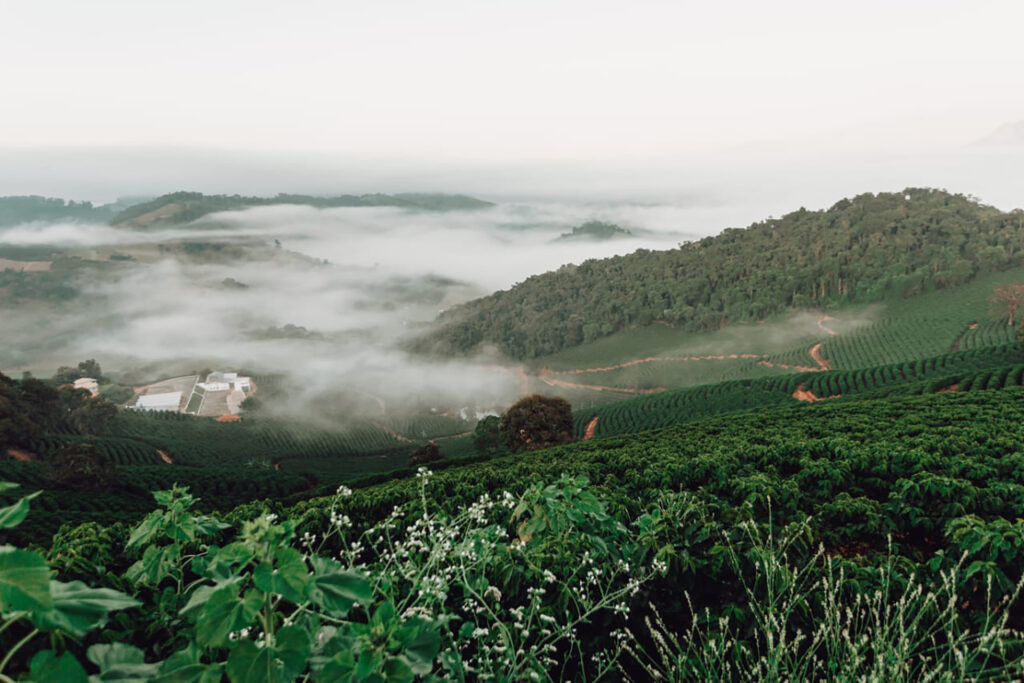
Afonso is worried about getting mixed up with other farmers who use the term regenerative but just plant a cover crop here and there and use a special biofertilizer, which is a mixture of organic matters plus the triad NPK. For him, this is a one-dimensional approach to a multidimensional, complex system. “Many companies are now producing this mixed organic fertilizer, however the source of potassium they use matters—if it comes from potassium chloride, it is cheaper, however I would be washing my soil with chloride, sterilizing it. So, I use products that are more costly but use more viable sources, because I’m interested in the product’s effect on the topsoil rather than just announcing to buyers that I am applying this or that product.”
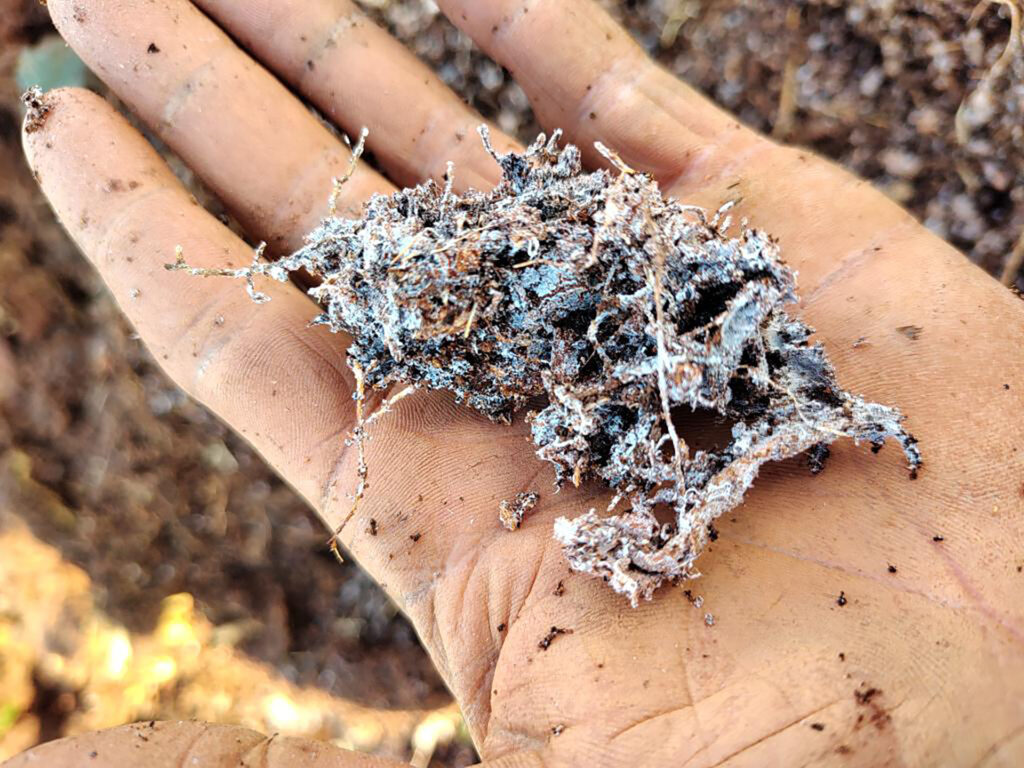
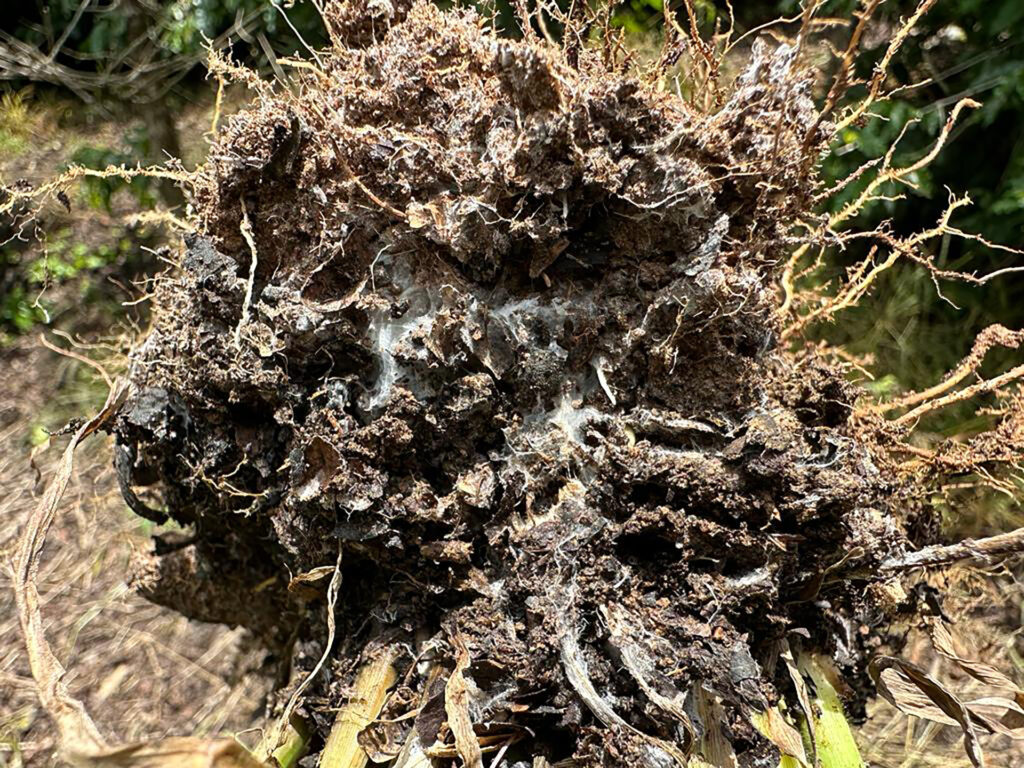
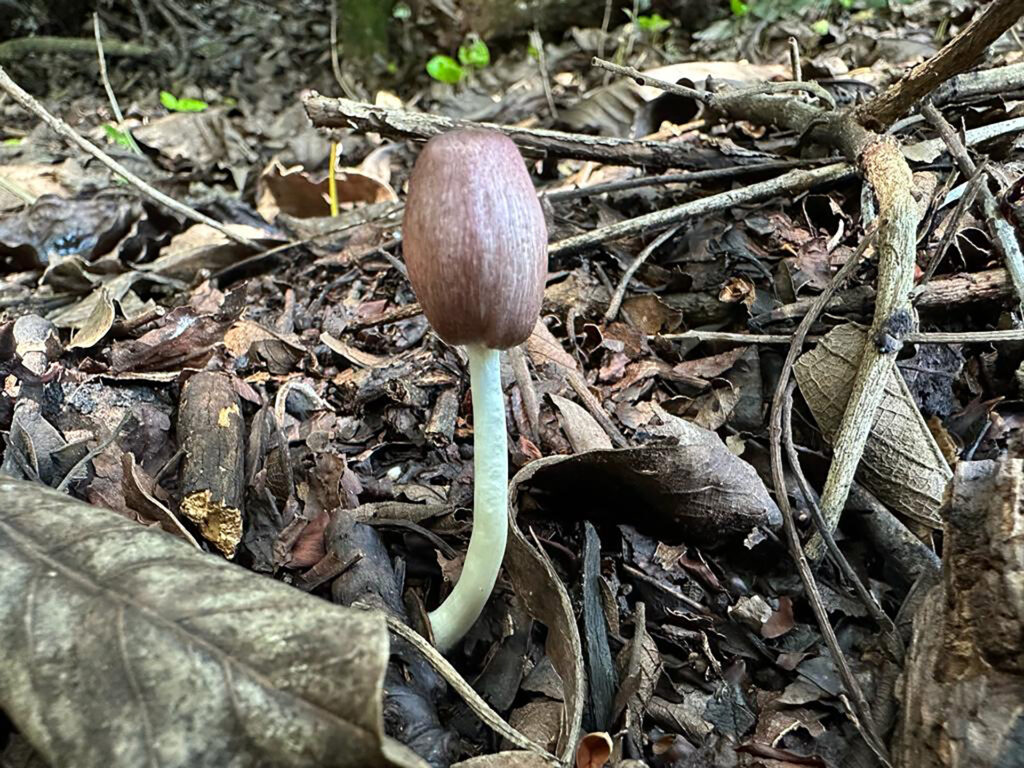
Afonso now doesn’t use chemical weed sprays in any of his coffee plots, but he cannot go for an organic certification since he still uses the mixed fertilizer. And he does not want to be tied to the organic framework—he prefers to call his method regenerative, and he sees it as the only way forward in coffee farming, given the rise in temperatures and unusual droughts (and floods) we have been seeing in the region in the last crop years. He started off with two tons of the mixed fertilizer per hectare, and now after three years, he is using 1.1 per hectare, having reduced its amount by almost half. Afonso also sees cover crops as the cheapest organic matter source there is, replacing the use of manure. He believes that this type of management, although initially more costly, is more productive since crops do not feel “water stress” as in conventional systems—the high levels of organic matter in the soil hold way more humidity.
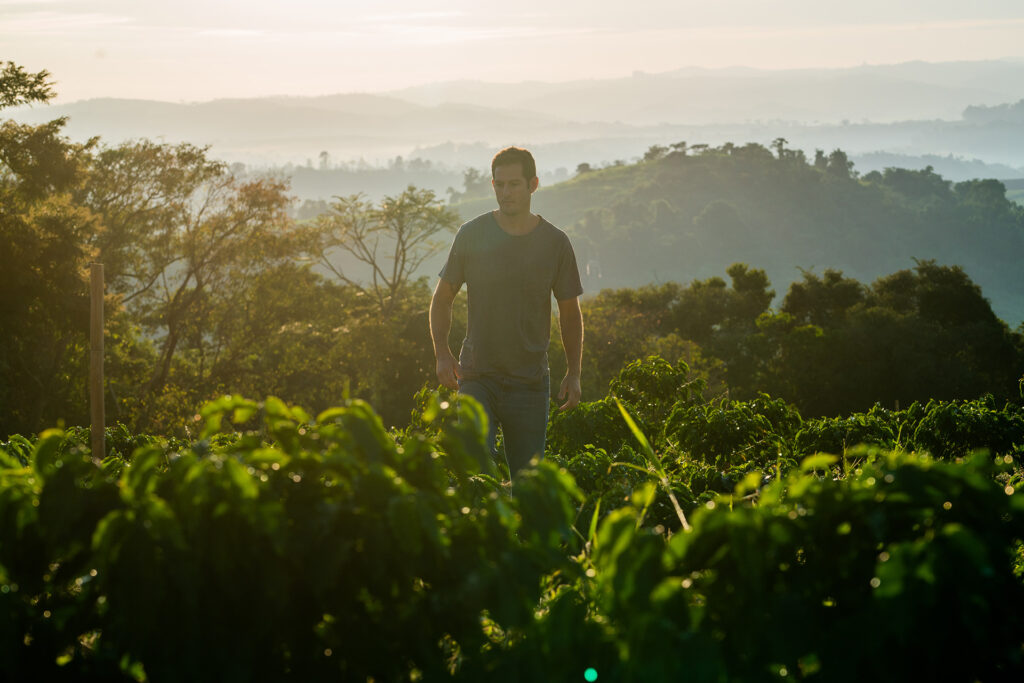
At Fazenda Ambiental Fortaleza (FAF), located in Mococa, São Paulo, Felipe Croce tells me that their pledge is being beyond organic, or sustainable. “Sustainability is giving back the land in the same condition it was given to us, and we believe this is no longer sufficient. We need to turn it better than it was when we first touched it.” Part of their mission is now being sustainable (preserving) and at the same time regenerating the land: actively contributing to restoration and enhancing biodiversity.
Croce through FAF also works with 20 communities, reaching three states across Brazil, so they bring this philosophy to many other producers. “We do it without mentioning the words organic or sustainable to some farmers, because we know those can be scary to some of them who automatically associate it with low productivity.”
He has a hard time translating these efforts to FAF’s clients, so that they can perceive that coffee costs can go beyond its sensorial qualities—the time and labor spent towards regeneration should be accounted for as well. To help paving that bridge, Croce and his team have implemented a scorecard, scoring properties (among other things) grade 0 for excessive/irresponsible use of irrigation, monoculture, aggressive use of all the “cides” (pesticides, herbicides), exposed soil; 1 for non-exposed soil, some forms of biomass for coffee plants, responsible irrigation—and it progresses accordingly until score 3—so far. That way, Croce and his commercial team have the means to tell a buyer if the producer they are working with is a “1” or “2”, or even transitioning from one stage to another, and they can quickly grasp the producer’s efforts without necessarily having visited the farm themselves. “The same way we can talk across the industry about a coffee graded at 87 points (SCA), I want to say more of that lot: this is an 87 coffee from 2.5 property, and that is an 87 from a 1.5 property, and so on.”
As for recognition of their regeneration efforts, Croce believes that a certification might not be the best approach, due to the distinct stages the farmers they work with might be. The solution would lie on impact measurement/third party verification scorecard organizations such as Enveritas, not in pass/fail certifications that are costly and could be unfair for producers who are perceptibly improving their standards year to year. “It’s like taking a detailed picture of the property, and with that picture we can carefully look at areas for improvement.”
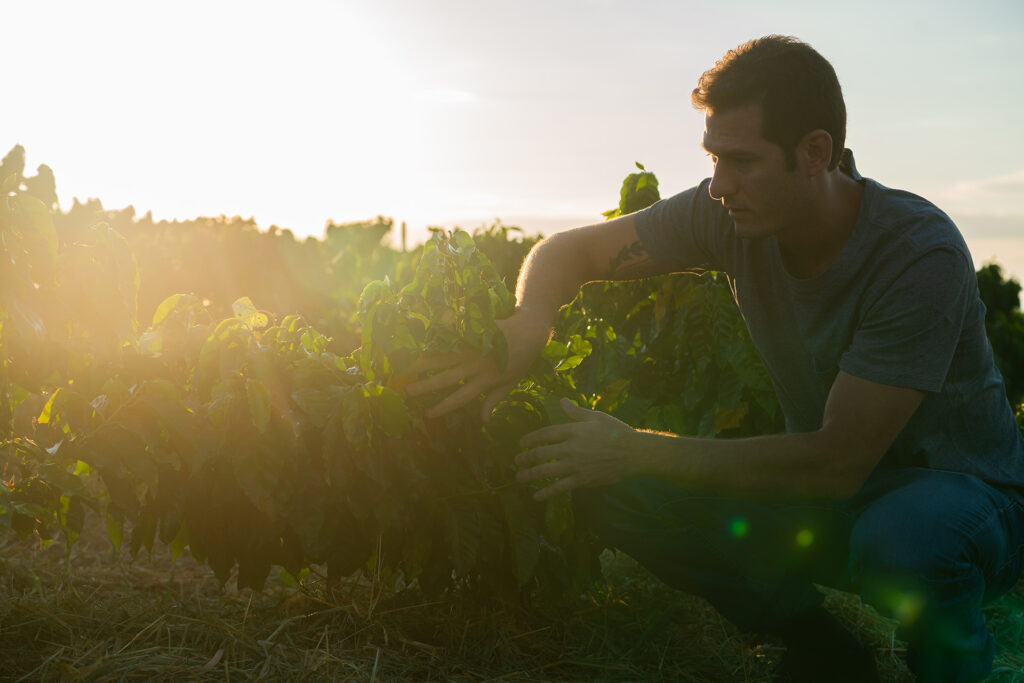
He adds that there are studies done with FAF and their producer partners that prove they are in the right path towards a regenerative agriculture track, but their main problem now is communication. “For example, there was a study that found out we have 70 different species of bees living in our farm. How do I make a customer at a coffee shop in the other side of the world find this interesting, or recognize its value? I have no idea.”
The regenerative coffee farming movement can be a beneficial tool in that it brings up important matters for discussion such as topsoil health, cover crops, biodiversity, water supply, and its effects on our culture and environment/climate (as a species sharing a planet). However, the term regenerative coffee on a label can become meaningless or abstract if loosely applied. For now, the best way to ensure you are buying coffee that is good for you and for the environment remains by knowing your roaster (or barista, importer, producer—the farther you can reach)—and asking all the questions yourself.
Juliana Ganan is a Brazilian coffee professional and journalist. Read more Juliana Ganan on Sprudge.
Photos of FAF by Erico Hiller, courtesy Felipe Croce.
